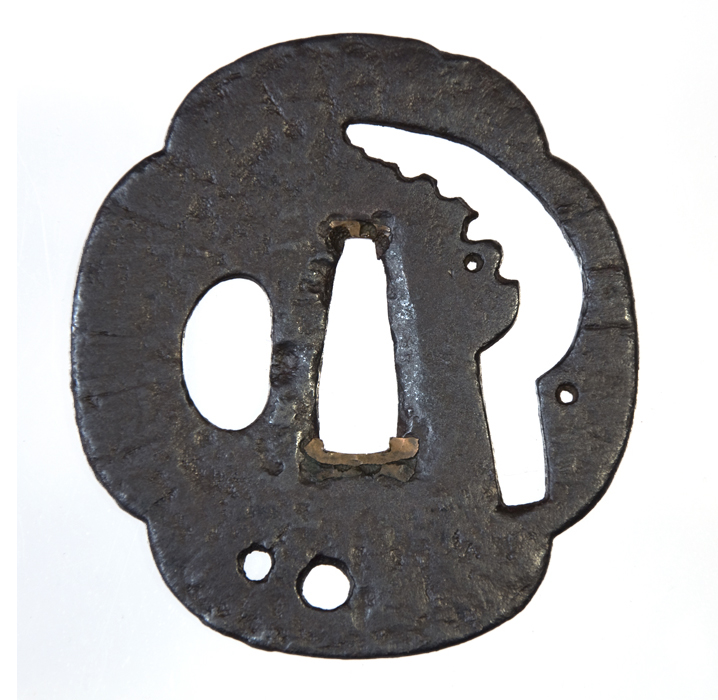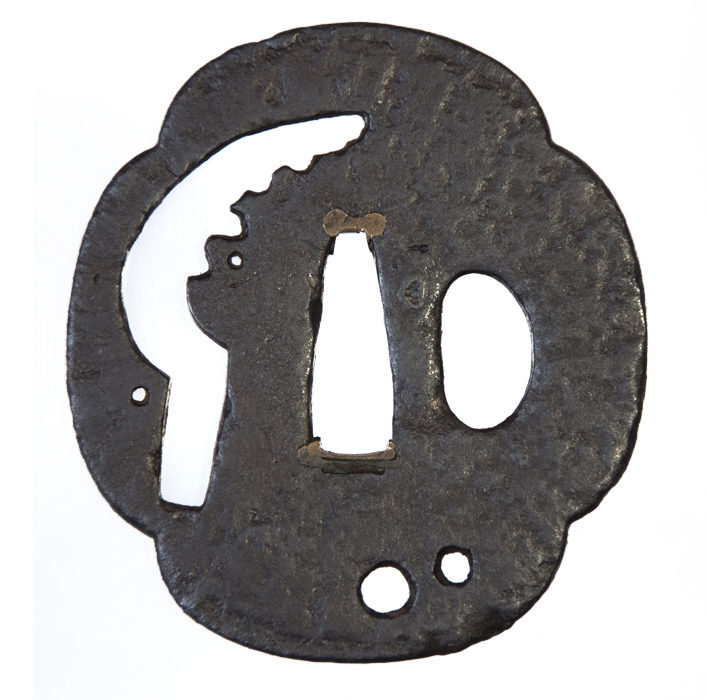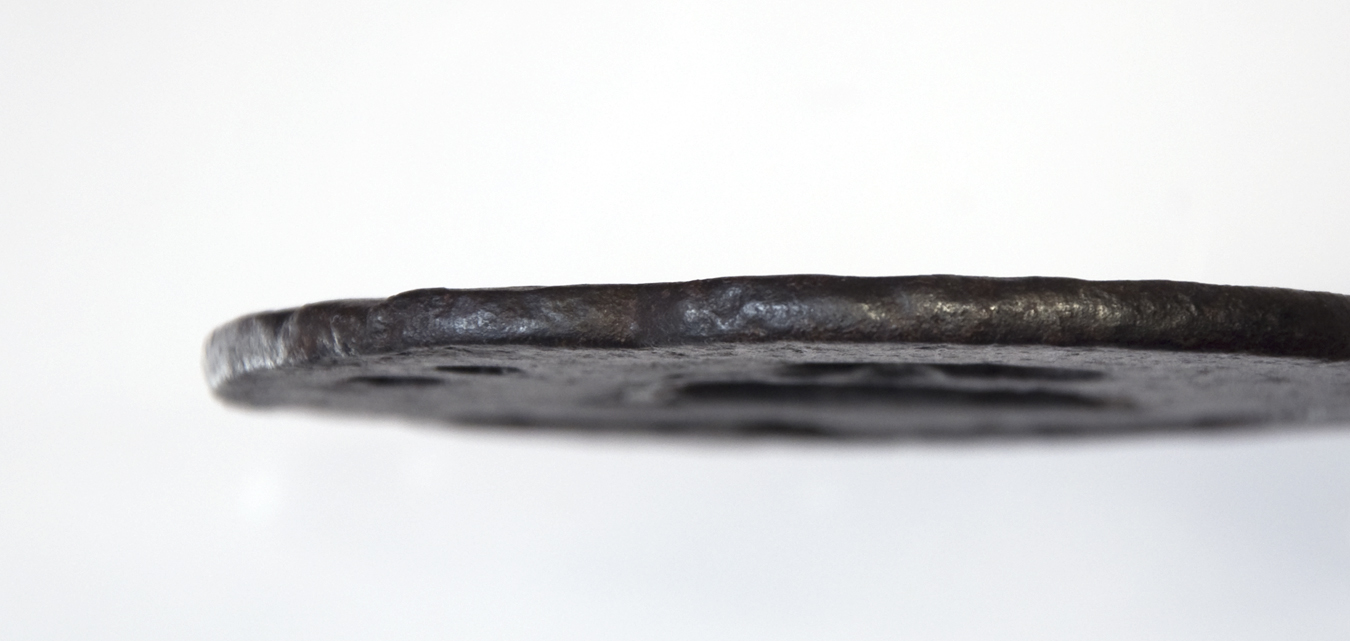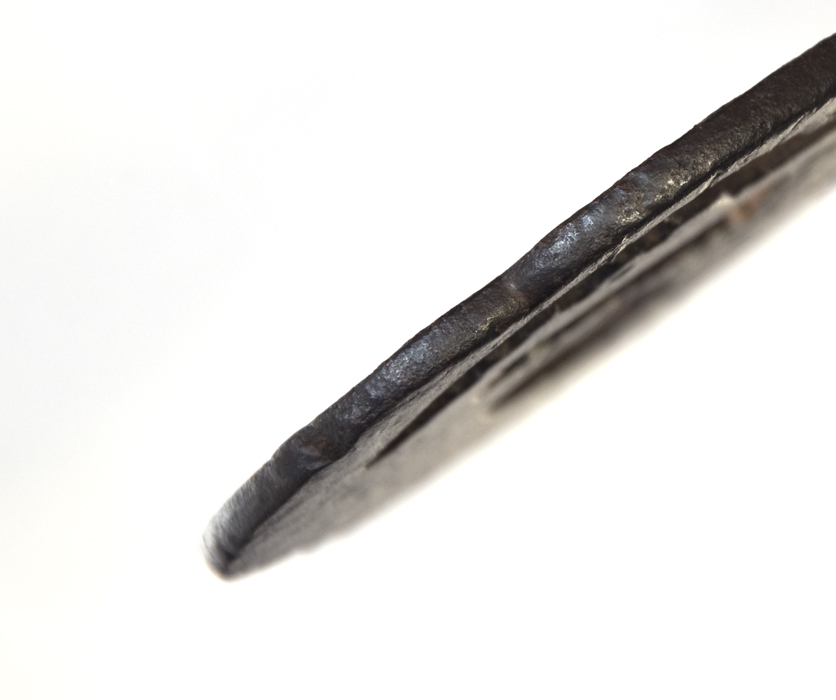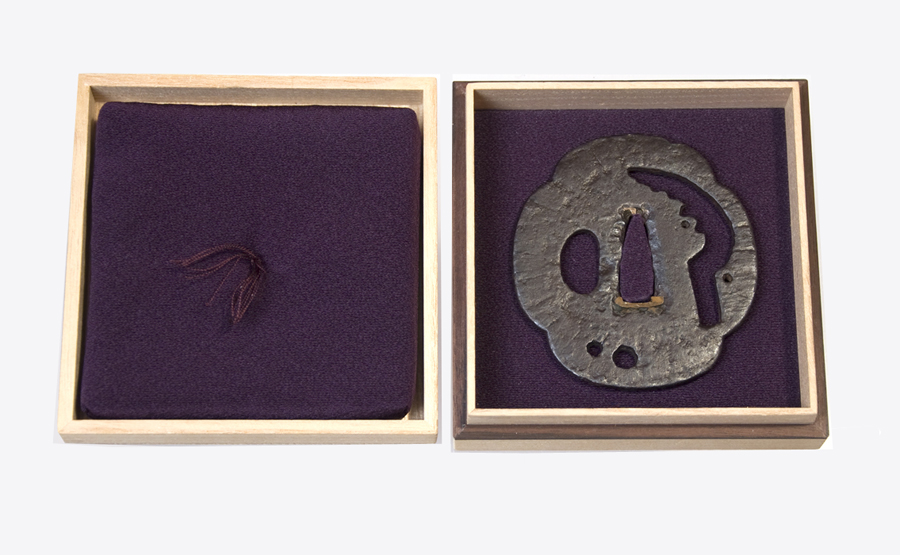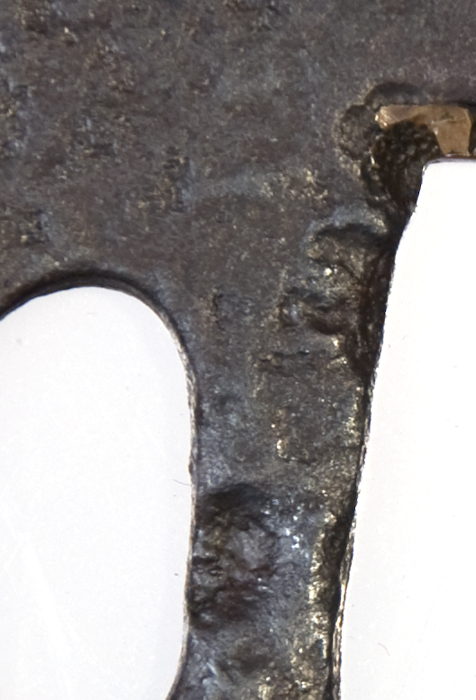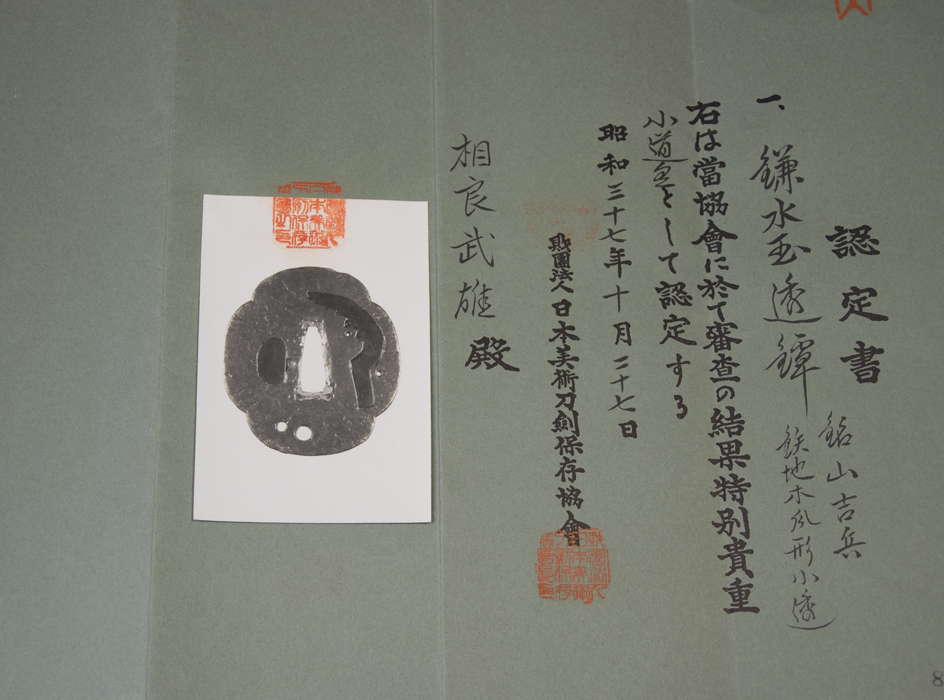Nidai Yamakichibei
山吉兵二代
Published in the 11th Kokusai Tosogu Kai Catalogue
1962 NBTHK Tokubetsu Kicho
Dimensions: 76 mm x 69 mm
Thickness: 2.4 mm (mimi) 3.1mm (seppa-dai)
A rare Nidai Yamakichibei tsuba. This fine tsuba was published in the 11th Kokusai Tosogu Kai catalogue. Below is the description of this tsuba from the catalogue. This tsuba also comes with a 1962 NBTHK Tokubetsu Kicho paper and a copy of the 11th Kokusai Tosogu Kai book. A wonderful, signed, published and NBTHK papered Nidai Yamakichibei tsuba.
Tsuba
Signed; Yamakichibei (2nd generation)
Kama ni tsuyu (sickle and dewdrop) motif
Tetsu-ji
Circa: Momoyama period (End of 16th to beginning of 17th century)
Dimensions; 76.0 mm (h), 69.0 mm (w), 2.4 mm (mimi), 3.1 mm (seppa-dai)
Here we have an example of mokko-gata iron tsuba made for shoto or wakizashi. The work is believed to be that of nidai Yamakichibei. The tsuba features sukashi of an agricultural and satoyama woodland tool known as a kama. We can observe the placement of flanked dewdrops that offer a visual counterpoint and accentuate the teeth of the kama. The viewer will also note that an artistic decision was made to have the outer edge of the hitsuana follow the outline drawn by the mimi completing the balanced composition. There is a pronounced Amida-yasuri throughout the ji, the deepest of which, found carried through on the outer side of the kama sukashi. The rustic sobriety and unpretentiousness of the ji-gane achieved by the Yamakichi lineage is perfectly in keeping with Zen aesthetic sensibilities that were popular during its time of manufacture.
The reasoning behind the nidai attribution being in part the first stroke of the yama character is in the form of a dot complimented with a separated curved second stroke that the nidai was known for. (As we know, the nidai and sandai applied their signature before the final hardening as was the case for this example.) Furthermore, the overall quality, purple-ish color and abundance of globular and linear tekkotsu, the presence of sukinokoshi-mimi as well uchikaeshi-mimi illustrates the close relationship to the origin of the school. Unfortunately, when the tsuba was remounted (note the secondary sekigane) parts of the signature were lost due to widening the seppa dai to snuggly secure the new mounting.
As one of the elementary principles of Zen Buddhism is the idea of denying the "self" and the admonishment of desire, the philosophy was encouraged by daimyo and adopted by the samurai from the Kamakura Period forward. Japanese artists have long used artistic interpretations of vehicles or instruments such as ox carts, wheels, boats, oars, rudders, sickles, staffs, and the like, to communicate this principle of life being a "tool" to achieve Buddhist enlightenment as is the case with the example here. These graphic representations serve as a constant reminder of the idea of accepting the reality of death at a moment's notice. The kama is a tool to make-clear the field and satoyama woodland (an important source of fuel, food, compost, etc.) that is life, and, living by the sword is making-clear the current and future path of the swordsman.
SOLD
nihontocraft@bellsouth.net
